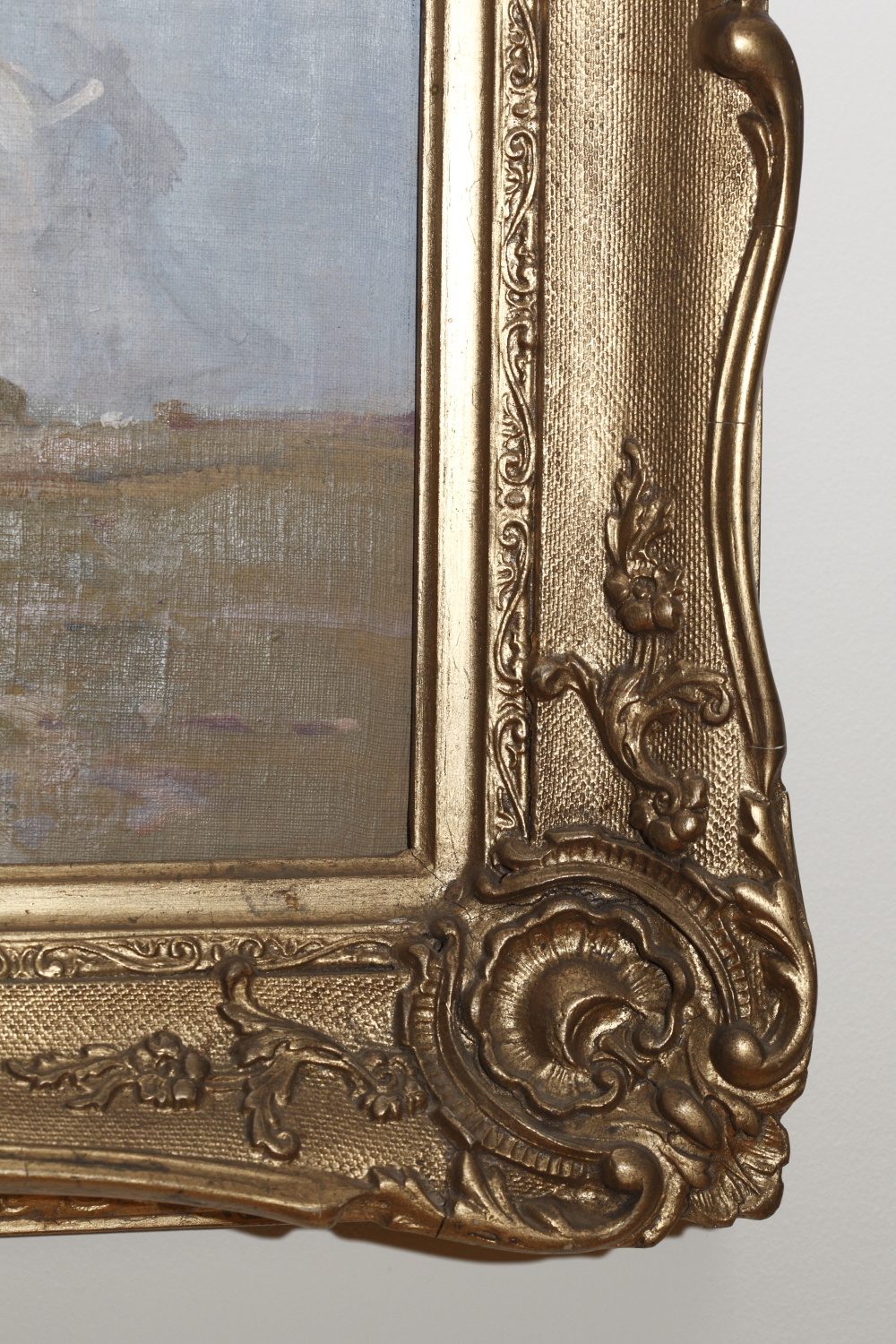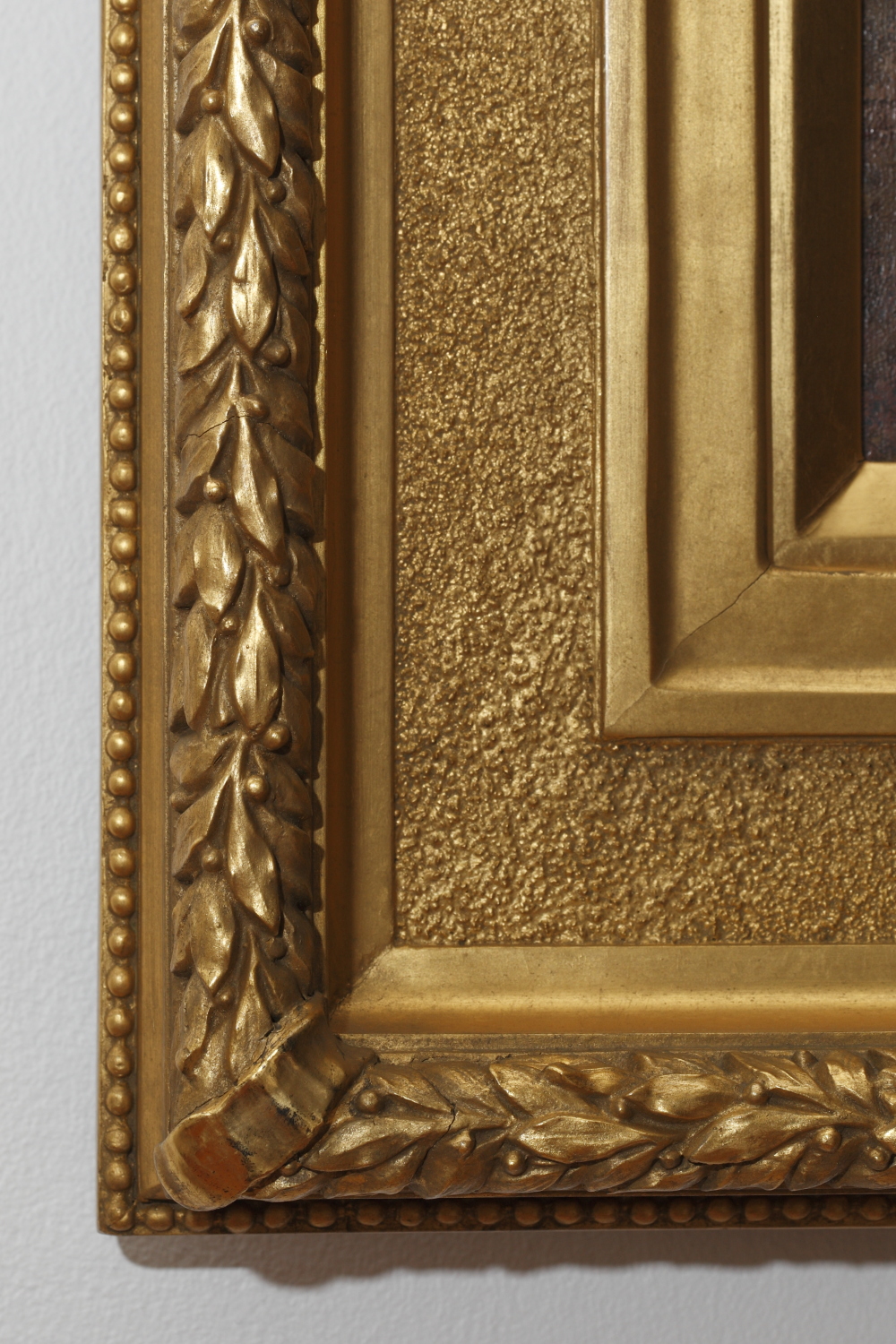Murdoch on frames
In the midst of Central Victoria lives one of Australia’s eminent frame makers, Rob Murdoch. In this broad-ranging reflection, he discusses the changing fortunes of period frames in public and private collections and poses an intriguing conundrum to professionals and visitors.

Murdoch on frames
It is no surprise that within CAM’s collection of framed artworks there are some that need conservation and repair—a situation common to galleries worldwide.
An ongoing program to maintain collections is beyond the budget of many galleries, but in some cases this imposed neglect can have benign outcomes. Why? Because considerable harm has been done to collections when old stuff has been replaced by new, without a clear understanding of the historical value of what is discarded. There are records of gallery directors and collectors who have partly or completely reframed important collections in a style consistent with their sense of taste. The original frames were sometimes burnt to recover the gold leaf or were otherwise lost to posterity.
Fortunately, benign neglect has to some extent applied to CAM’s frames and, at least in the case of paintings, little needs to be done other than determining whether the state of the frame has an adverse effect on the viewer’s appreciation of the painting, and ensuring that the painting is suitably housed within the frame. If a frame carries its aged condition gracefully, minor damage can be overlooked. After all, one of the primary purposes of a frame is to protect the artwork it encloses, and minor damage is evidence that it has been doing its job.

Some of the frames around CAM’s paintings and works on paper are valuable examples of styles contemporary with the works, and may be the original frames. When on display, an accompanying note about a frame, when it has a historical or socially significant link to the artwork, is a growing practice in major galleries here and overseas, and has been found to be of considerable interest to the viewer. Establishing authenticity of frames is tricky, but evidence can often be gained from old photographs of exhibition hangings.
On the broader aspects of framing, many galleries here and overseas have reframed important artworks, replacing inappropriate frames with historically accurate replicas. This frequently results in a tug-of-war between strict historical accuracy, conservation issues, cost and taste. When there are no complete contemporary frames in existence, accuracy cannot always be determined. As an example, the National Gallery of Victoria’s late 14th century tempera painting by Agnolo Gaddi (Madonna and Child with St John the Evangelist, St John the Baptist, St James of Compostela and St Nicholas of Bari) was acquired without a frame. When the frame was made, there was discussion about how much simulated ageing should be applied. It was decided, because the painting was remarkably well preserved, that the frame should be finished to a similar well-preserved state. The reasoning was that if the frame had an appearance consistent with six hundred years of wear and tear, it would have looked incongruous and distracting against the near pristine appearance of the painting.
Leaving the historical scene aside, what does a gallery do when a gifted or acquired contemporary work has a frame that ignores conservation requirements, is poorly constructed and in danger of falling apart but is the work of the artist?
Rob Murdoch
January 2021